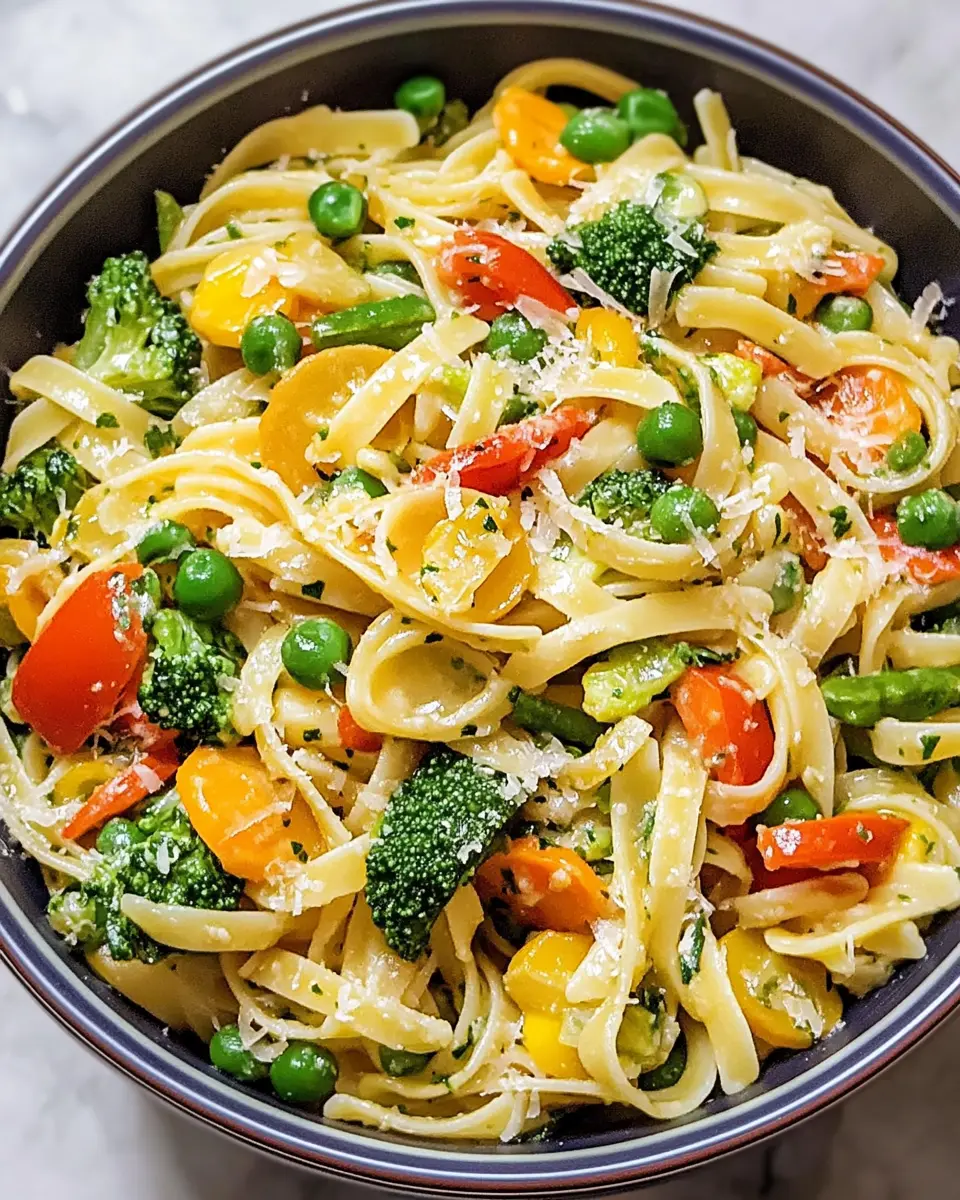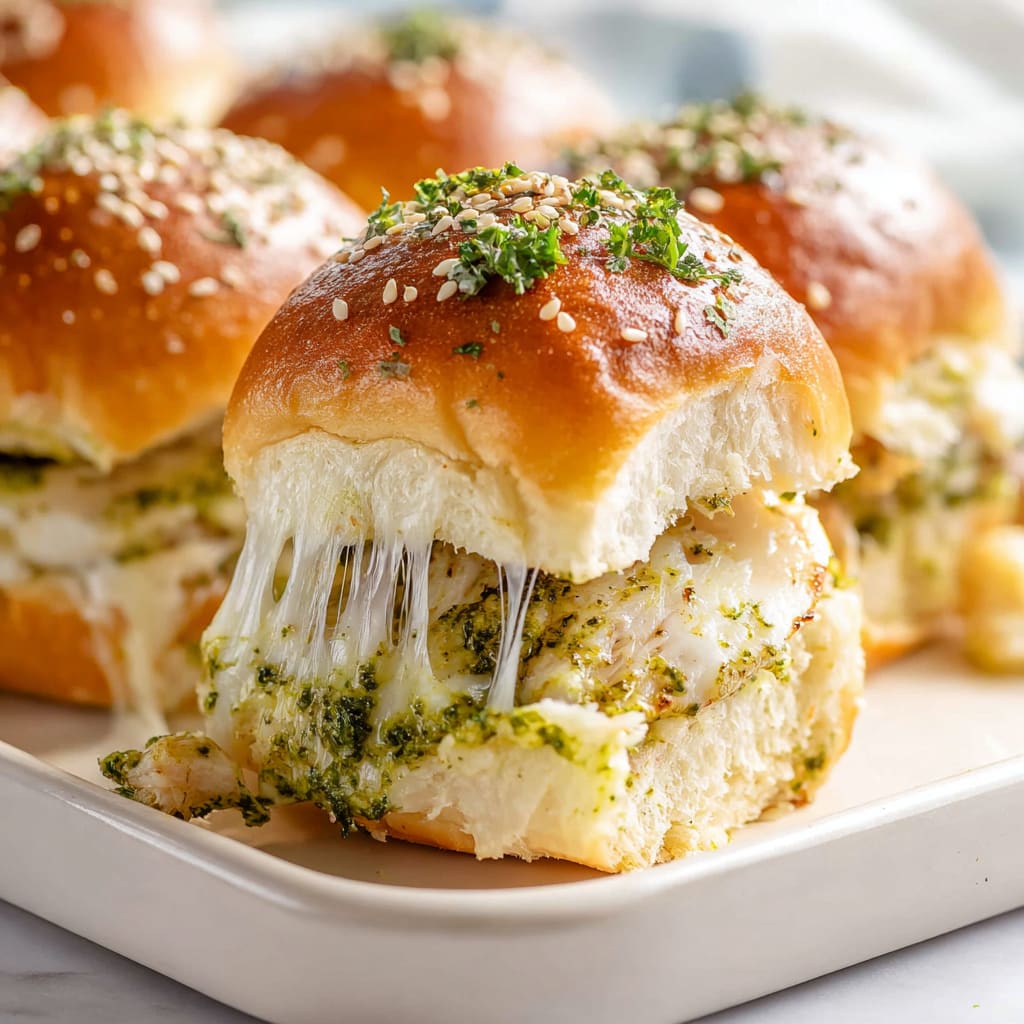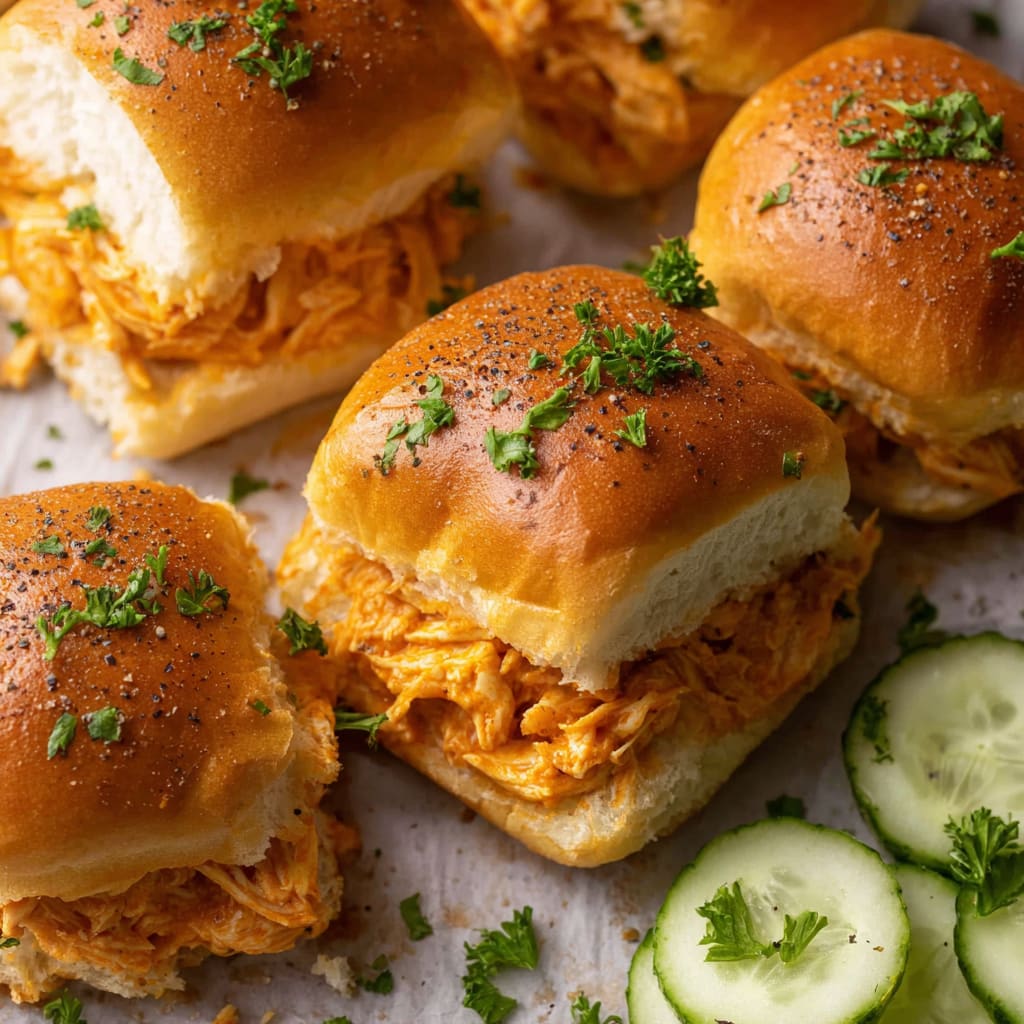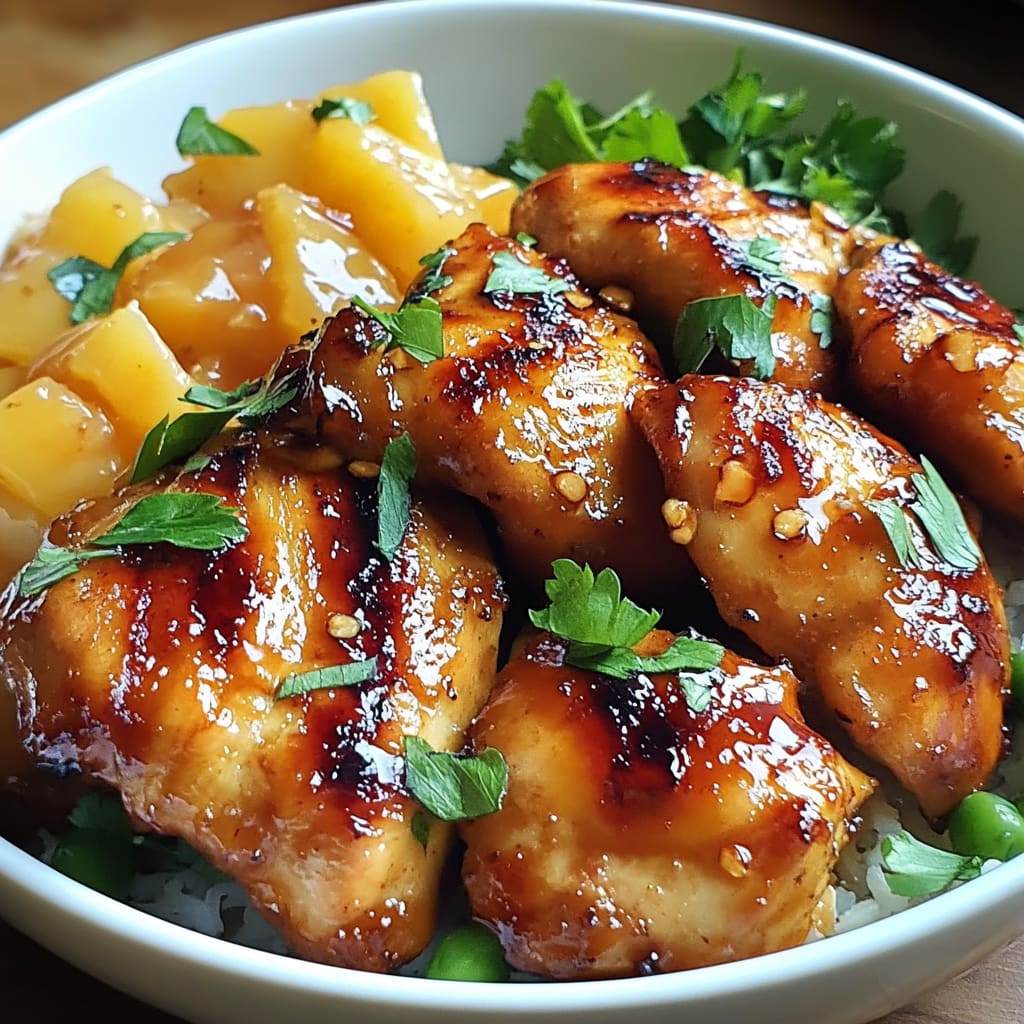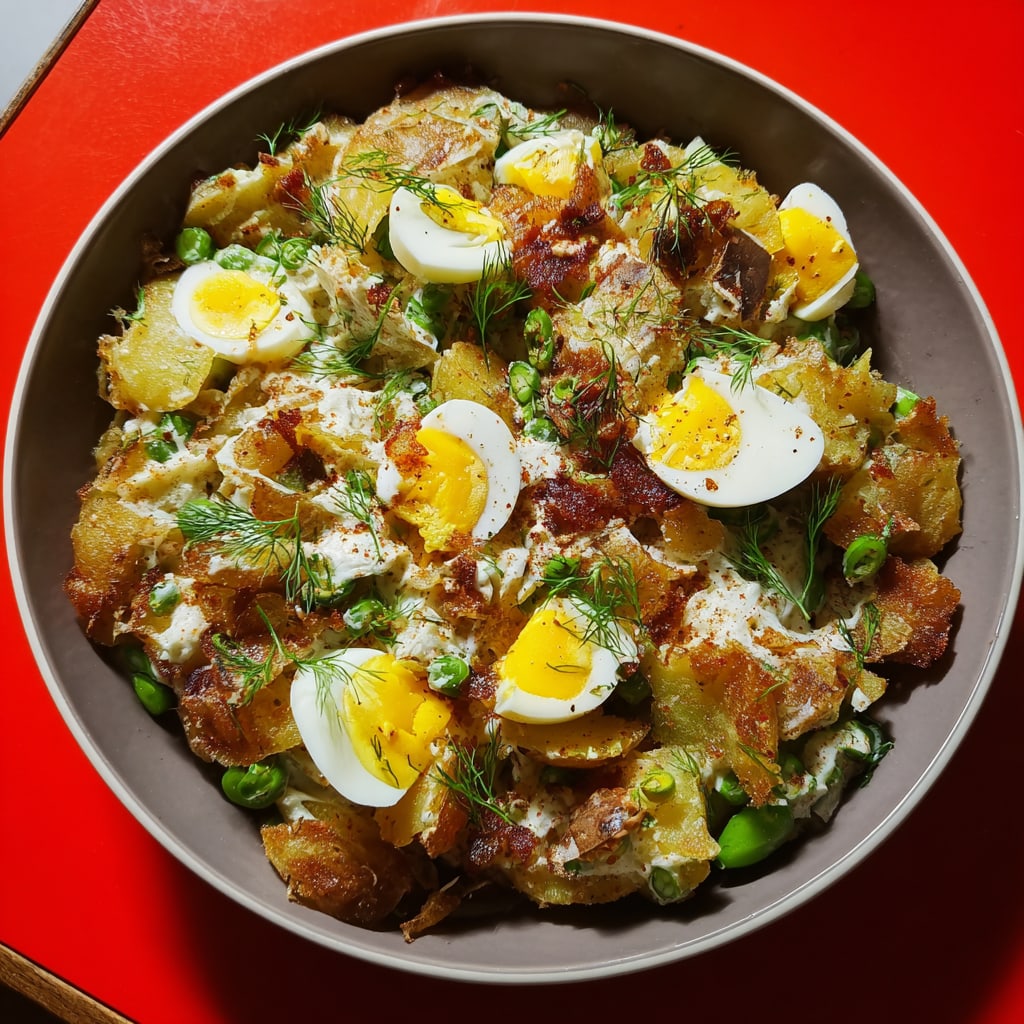Fresh, vibrant, and bursting with spring vegetables, Pasta Primavera delivers a symphony of colors and textures in every forkful. This Italian-American classic combines al dente pasta with crisp seasonal vegetables and a light, flavorful sauce that lets the natural ingredients shine. Pasta Primavera has become a beloved dish for those seeking a balanced meal that doesn’t sacrifice flavor for freshness. You’ll learn how to create the perfect balance of tender-crisp vegetables, perfectly cooked pasta, and a sauce that brings everything together in delicious harmony.
Why You’ll Love This Recipe
Pasta Primavera is the ultimate celebration of seasonal vegetables transformed into a satisfying main course. Unlike heavy cream-based pasta dishes, this lighter version lets the natural sweetness and texture of spring vegetables take center stage. You’ll love the contrast between the slightly chewy pasta and the tender-crisp snap of barely cooked vegetables, all tied together with a sauce that clings to every ridge and curl of your pasta.
This vegetable pasta recipe is incredibly versatile, working beautifully as both a quick weeknight dinner and an impressive dish for casual entertaining. It’s customizable based on whatever vegetables look best at your market, making it a perfect recipe for cleaning out your produce drawer. Plus, it comes together in under 30 minutes, making it a practical choice even on busy evenings when you’re craving something homemade and satisfying without extensive preparation.
Ingredients
For this vibrant Pasta Primavera, you’ll need:
- 12 oz (340g) fettuccine or pasta of choice
- 3 tbsp (45ml) olive oil, divided
- 1 medium yellow onion (about 1 cup/150g), thinly sliced
- 3 cloves garlic (about 1 tbsp/9g), minced
- 1 medium red bell pepper (about 1 cup/150g), julienned
- 1 medium yellow squash (about 1 cup/150g), halved lengthwise and sliced
- 1 medium zucchini (about 1 cup/150g), halved lengthwise and sliced
- 1 cup (150g) cherry tomatoes, halved
- 1 cup (150g) asparagus, woody ends removed and cut into 2-inch pieces
- 1 cup (150g) broccoli florets, cut into bite-sized pieces
- ¼ cup (60ml) vegetable broth
- ¼ cup (25g) freshly grated Parmesan cheese, plus more for serving
- 2 tbsp (30ml) fresh lemon juice
- ¼ cup (15g) fresh basil leaves, torn
- Salt and freshly ground black pepper, to taste
- ¼ tsp red pepper flakes (optional)
The key to outstanding Pasta Primavera is using the freshest seasonal vegetables available. For best results, choose vegetables with vibrant colors and firm texture, as they’ll maintain their crispness better during the quick cooking process.
Pro Tips
Perfect Pasta Preparation
For restaurant-quality Pasta Primavera, cook your pasta just until al dente (usually 1-2 minutes less than the package instructions suggest). Remember to generously salt your pasta water—it should taste like seawater. This seasons the pasta from within as it absorbs the water during cooking. Reserve about ½ cup of starchy pasta water before draining to help your sauce cling to the pasta.
Vegetable Timing Is Everything
The secret to perfectly cooked vegetables is adding them to your pan in order of cooking time. Start with aromatics like onions and garlic, then add firmer vegetables like broccoli and asparagus, finishing with quick-cooking vegetables like tomatoes and zucchini. This technique ensures every vegetable retains its ideal texture—no mushy broccoli or undercooked carrots.
Creating a Silky Sauce
Rather than drowning your vegetables in heavy cream, create a lighter, silkier sauce by emulsifying olive oil with a splash of pasta water and lemon juice. Toss the hot pasta with this mixture, then add a shower of freshly grated Parmesan cheese while the pasta is still piping hot. The residual heat will melt the cheese and create a light, glossy coating that perfectly adheres to both pasta and vegetables.
Instructions
Step 1: Prepare Your Ingredients
Before heating any pans, prep all your vegetables. Have everything chopped, sliced, and ready to go, as this dish comes together quickly once you start cooking. Bring a large pot of heavily salted water to a boil for your pasta. The water should taste salty like the sea—this is your chance to season the pasta from within.
Step 2: Cook the Pasta
Add the pasta to the boiling water and cook until al dente according to package instructions, usually 8-10 minutes. Before draining, reserve ½ cup of the starchy pasta water. Drain the pasta but don’t rinse it—the starch on the surface helps the sauce cling to each strand.
Step 3: Sauté the Aromatics
While the pasta cooks, heat 2 tablespoons of olive oil in a large skillet or sauté pan over medium heat. Add the sliced onions and cook for 2-3 minutes until they begin to soften. Add the minced garlic and cook for another 30 seconds until fragrant, being careful not to let it brown.
Step 4: Cook the Vegetables in Stages
Add the broccoli and asparagus first, cooking for 2 minutes until they begin to soften but retain some crispness. Next, add the bell pepper, zucchini, and yellow squash. Cook for an additional 2-3 minutes, stirring occasionally. The vegetables should be tender-crisp and vibrantly colored. Finally, add the cherry tomatoes and cook for just 1 minute more—they should warm through but not break down completely.
Step 5: Create Your Sauce
Pour the vegetable broth into the pan and bring to a gentle simmer. Add the lemon juice, remaining tablespoon of olive oil, and a few grinds of black pepper. If using, add the red pepper flakes for a touch of heat.
Step 6: Combine and Finish
Add the drained pasta directly to the skillet with the vegetables. Toss everything together, adding splashes of reserved pasta water as needed to create a light, silky sauce that coats the pasta. Sprinkle in the Parmesan cheese and toss while the pasta is still hot so the cheese melts slightly. Fold in the torn basil leaves and adjust seasoning with salt and pepper to taste.
Step 7: Serve
Immediately transfer your Pasta Primavera to warmed serving plates or a large serving bowl. Top with additional freshly grated Parmesan cheese and torn basil leaves for a beautiful presentation. Serve right away while the pasta is hot and the vegetables are at their flavorful best.
Variations
Creamy Pasta Primavera
For a richer version of this spring vegetable pasta, add ½ cup of heavy cream along with the vegetable broth. Reduce the mixture slightly before adding the pasta and cheese. This creates a luxurious sauce that still allows the vegetables to shine. For an extra dimension of flavor, stir in 2 tablespoons of mascarpone cheese just before serving.
Protein-Packed Primavera
Transform Pasta Primavera into a heartier meal by adding protein. Sauté 1 pound of peeled shrimp with the vegetables during the last 3-4 minutes of cooking, or fold in 2 cups of shredded rotisserie chicken just before adding the pasta. For a vegetarian protein boost, add 1 cup of fresh or frozen peas during the last minute of cooking the vegetables.
Gluten-Free or Low-Carb Options
This versatile recipe works beautifully with gluten-free pasta varieties, including those made from rice, corn, or legumes. For a low-carb alternative, replace half (or all) of the pasta with 2-3 cups of spiralized zucchini noodles. Add them to the pan during the last minute of cooking—they need just enough heat to warm through while maintaining their delightful texture.
Storage and Serving
Pasta Primavera is best enjoyed immediately after cooking when the pasta is perfectly al dente and the vegetables maintain their vibrant colors and crisp textures. However, leftovers can be stored in an airtight container in the refrigerator for up to 3 days. When reheating, add a splash of water or broth to revive the sauce, and warm gently over medium-low heat, being careful not to overcook the vegetables.
For a complete meal, serve your Pasta Primavera with a simple side salad dressed with lemon vinaigrette and a slice of crusty garlic bread. For a beautiful presentation that’s perfect for spring entertaining, serve it family-style on a large platter garnished with additional fresh herbs, lemon wedges, and a generous dusting of freshly grated Parmesan.
Transform leftover Pasta Primavera into a delicious cold pasta salad for lunch the next day. Simply toss the chilled pasta with a little extra olive oil, a squeeze of fresh lemon juice, and some additional fresh herbs. This makes for a perfect packed lunch that requires no reheating.
FAQs
Can I make Pasta Primavera ahead of time?
While Pasta Primavera is best prepared fresh, you can prep all vegetables up to 24 hours in advance and store them in separate containers in the refrigerator. Cook the pasta and assemble the dish just before serving for optimal texture and flavor.
What’s the best pasta shape for Pasta Primavera?
Medium-sized pasta shapes with ridges or curves like fusilli, penne, or farfalle work exceptionally well for Pasta Primavera as they catch small pieces of vegetables and sauce in their crevices. Long pasta like fettuccine or linguine also works beautifully, creating an elegant presentation.
How can I make this recipe vegan?
To make vegan Pasta Primavera, simply omit the Parmesan cheese or replace it with a plant-based alternative. Many grocery stores now carry excellent vegan Parmesan-style products, or you can make your own by processing equal parts nutritional yeast, raw cashews, and a pinch of salt until it reaches a Parmesan-like consistency.
Can I use frozen vegetables?
While fresh vegetables provide the best texture and flavor for Pasta Primavera, frozen vegetables can work in a pinch. Thaw them completely and pat dry before adding to the pan, and reduce their cooking time by about half since they’re already partially cooked.
My sauce seems dry. How can I fix this?
If your Pasta Primavera sauce seems too dry, gradually add more reserved pasta water, a tablespoon at a time, while tossing continuously. The starch in the pasta water helps create a silky sauce that clings to the pasta. A final drizzle of good quality olive oil just before serving also adds moisture and flavor.
Conclusion
This Pasta Primavera is comfort food at its finest — bright, fresh, and satisfying without weighing you down. It’s the perfect celebration of spring vegetables transformed into a vibrant, colorful dish that looks as good as it tastes. It’s the kind of dish that reminds us that simplicity often yields the most delicious results, letting quality ingredients speak for themselves. Whether you’re cooking for a special occasion or simply elevating your weeknight dinner routine, this Pasta Primavera delivers restaurant-quality flavors with minimal effort, making it a recipe you’ll return to season after season.
Print
Pasta Primavera
Description
Savor this Pasta Primavera, a quick & healthy delight! Enjoy a mix of vibrant veggies & herbs in a light, zesty sauce. Perfect spring meal!
Ingredients
- 12 oz (340g) fettuccine or pasta of choice
- 3 tbsp (45ml) olive oil, divided
- 1 medium yellow onion (about 1 cup/150g), thinly sliced
- 3 cloves garlic (about 1 tbsp/9g), minced
- 1 medium red bell pepper (about 1 cup/150g), julienned
- 1 medium yellow squash (about 1 cup/150g), halved lengthwise and sliced
- 1 medium zucchini (about 1 cup/150g), halved lengthwise and sliced
- 1 cup (150g) cherry tomatoes, halved
- 1 cup (150g) asparagus, woody ends removed and cut into 2-inch pieces
- 1 cup (150g) broccoli florets, cut into bite-sized pieces
- ¼ cup (60ml) vegetable broth
- ¼ cup (25g) freshly grated Parmesan cheese, plus more for serving
- 2 tbsp (30ml) fresh lemon juice
- ¼ cup (15g) fresh basil leaves, torn
- Salt and freshly ground black pepper, to taste
- ¼ tsp red pepper flakes (optional)
Instructions
- Prepare all vegetables before starting to cook. Bring a large pot of heavily salted water to a boil for the pasta.
- Cook pasta until al dente according to package instructions (8-10 minutes). Reserve ½ cup pasta water before draining.
- While pasta cooks, heat 2 tablespoons olive oil in a large skillet over medium heat. Add onions and cook for 2-3 minutes until softening.
- Add garlic and cook for 30 seconds until fragrant.
- Add broccoli and asparagus first, cooking for 2 minutes. Then add bell pepper, zucchini, and yellow squash. Cook for another 2-3 minutes.
- Add cherry tomatoes and cook for just 1 minute more.
- Pour in vegetable broth, lemon juice, remaining tablespoon of olive oil, black pepper, and red pepper flakes if using.
- Add drained pasta to the skillet. Toss everything together, adding splashes of reserved pasta water as needed to create a silky sauce.
- Sprinkle in Parmesan cheese and toss while pasta is still hot. Fold in torn basil leaves.
- Season to taste with salt and pepper.
- Serve immediately topped with additional Parmesan cheese and fresh basil.

